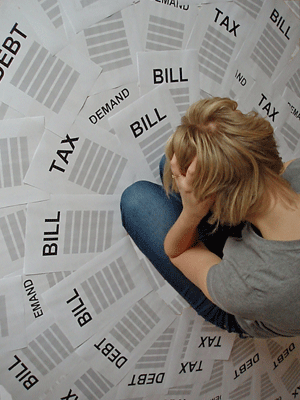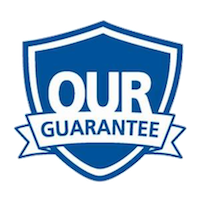Chapter 13 Bankruptcy
 A Debtor enters into a Chapter 13 to partially repay his or her debt. This is not a full repayment and is based upon the debtor's disposable income to determine a manageable payment plan to the Bankruptcy Court. It is usually necessary that a debtor have some form of regular income to qualify for a Chapter 13 reorganization.
A Debtor enters into a Chapter 13 to partially repay his or her debt. This is not a full repayment and is based upon the debtor's disposable income to determine a manageable payment plan to the Bankruptcy Court. It is usually necessary that a debtor have some form of regular income to qualify for a Chapter 13 reorganization.
The Plan – The Chapter 13 plan is a written explanation of how the debtor intends to straighten out his financial mess. Your attorney will devise the plan and determine how your secured, unsecured and priority debts will be paid and at what discount. Your attorney will also complete the necessary budget, means test and other documents required in a Chapter 13 filing. As long as the debtor makes all payments in accordance with the confirmed plan, he can remain under the protection of the bankruptcy court. The monthly plan payment is made directly to the Chapter 13 trustee, who disburses the money to creditors in accordance with the confirmed plan.
A very important part of a Chapter 13 nowadays is the ability to strip second mortgages if the value of the home is less than than the amount owed on the first mortgage. In the 1990s and early 2000s, this was not usually an option. Now that house prices have declined substantially, a debtor can often eliminate second and third mortgages as well as home equity lines of credit.
Likewise, underwater vehicles that the debtor has owned for more than 910 days can be revalued at their current fair market value potentially saving thousands of dollars. Reduction of IRS penalties and interest is also possible in a Chapter 13.
In May 2012, due to new caselaw, a second mortgage can now be stripped in both a Chapter 7 and 13. However, revaluing a vehicle is an option available only in a Chapter 13.
Debtors are allowed to keep all of their property in most cases, and during the early months of the bankruptcy, the Court will be asked to confirm the debtor's plan. You have an attorney to safeguard your interests and the entire process is carried out under the supervision of the Court. An advantage of a Court approved Chapter 13 Plan is that a partial repayment plan can be created even if creditors disagree with it, provided it meets with Court approval under the Bankruptcy Code requirements.
What Goes In the Plan?(a) Length of Plan – A plan that proposes to pay less than 100% to unsecured creditors must be a minimum of 36 months. Any plan that proposes to pay unsecured creditors in full can be as short as the debtor wants. The maximum plan length is 60 months. The shorter the plan period, the larger the monthly payments. The longer the plan period, the smaller the monthly payments. The ideal plan length is the shortest plan with the monthly payment the debtor is absolutely certain he can afford. Don’t bite off more than you can chew!
(b) Administrative Expense – An administrative expense is money owed by the debtor to a non-creditor for the administration of the bankruptcy case. These obligations are paid first.
(i) Trustee’s Expense – Terry Smith's office is paid 6.5% of every plan payment before disbursing money to creditors. John Waage's office is presently paid 10%. That means in calculating the actual plan payment, your attorney will add in the trustee’s fee on top of the creditor payments. Over the course of the plan, the trustee’s administrative expense is usually greater than your attorney’s fee.
(ii) Your Attorney’s Fee – Much of the quoted attorney’s fee is usually paid though the plan. So, while Arkovich Law charges the standard court approved $3,525 to $3,850 to file a Chapter 13 bankruptcy with a three or five year plan, most of that fee is paid through the plan, adding $30 to $50 per month to the plan payment.
(c) Creditor Proof of Claims – In order to receive payment, or other treatment, in the plan, a creditor must file a Proof of Claim. The debtor then has the opportunity to file an objection to that Proof of Claim, and if the creditor does not respond to the objection in writing within 30 days, the claim is stricken or modified in accordance with the objection. If the creditor does respond, the objection is scheduled for a hearing in front of the judge, and the claim is considered valid until the debtor proves that it is not. Many creditors do not file timely proofs of claim and are therefore not paid by the trustee. No interest is paid to unsecured creditors during the Chapter 13 plan.
(i) Priority Creditors – The plan must pay all priority creditors in full, unless there is a written agreement or court order that allows the debtor to pay the obligation over a longer period of time. Priority creditors do not have a security interest in any of the debtor’s property.
I.R.S. – Typically, since there is no state income tax in Florida, the I.R.S. is the only taxing authority that is given priority status. Keep in mind that if the debtor owes property taxes to the county tax collector, that debt is secured by real estate and is included in the plan as a secured claim. If the debtor is surrendering the real property, the property tax becomes an unsecured debt as to the debtor.
Support Arrearages – Claims filed by or on behalf of support creditors (i.e. alimony or child support) are priority claims and must be paid in full. However, if there is already an order in place that establishes the repayment of support arrears over a period of time longer than the plan length, then that lower monthly payment can be paid through the plan.
Property Distributions -- Reduced amounts can be paid in a Chapter 13 plan.
(ii) Secured Creditors – A secured creditor is a creditor that holds a perfected security interest in something owned by the debtor known as collateral. The most obvious examples are a house or a car. A Chapter 13 plan must either surrender the collateral back to the secured creditor, or it can repay the secured debt over the life of the plan.
- Long Term – Typically the debtor’s house – If the remaining term under the secured note is longer than the plan period, the debtor typically chooses to pay the regular monthly payment. This means that the debt will not be paid in full at the end of the plan. This also means that the debtor cannot modify the interest rate. This is typically what happens with house payments. Any past-due balance on the mortgage, known as the arrearage, is spread over the life of the plan without interest.
- Short Term – Typically the debtor’s car – If the remaining term under the secured note is shorter than the plan period, the debtor must pay the entire obligation in the plan. The really good news is that the debtor can sometimes reduce the contracted rate of interest and spread the payments over the entire plan period. The monthly payment to automotive finance companies is usually reduced so much that it can offset the arrearage owed on the debtor’s home. The net effect is that the plan payment is sometimes no greater than the original monthly payments on the house and car, even though the mortgage arrearage is being paid in the plan as well. Sounds confusing? It really isn’t.
(iii) Unsecured Creditors – The unsecured creditors are those creditors who don’t have a perfected security interest in the debtor’s property. Examples of general unsecured creditors are credit cards and medical bills. This type of debt is paid from a remaining pool of money after paying everyone else. Actually, it’s more like a small puddle than a pool. This small left-over sum is spread evenly across the unsecured creditors. This is known as a pro-rata payment. Unsecured creditors are rarely paid in full over the life of the plan, and are often paid as little as 5% of the balance due. Upon completion of the plan, the remaining balances are wiped out or discharged.
 Tampa Debt Relief Lawyers Arkovich Law Home
Tampa Debt Relief Lawyers Arkovich Law Home
